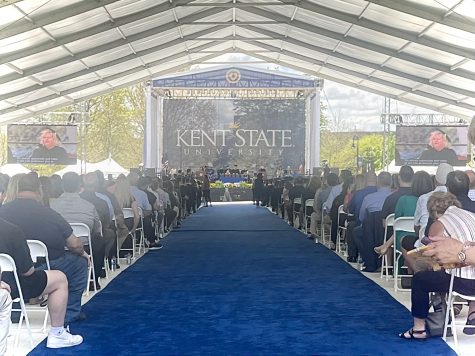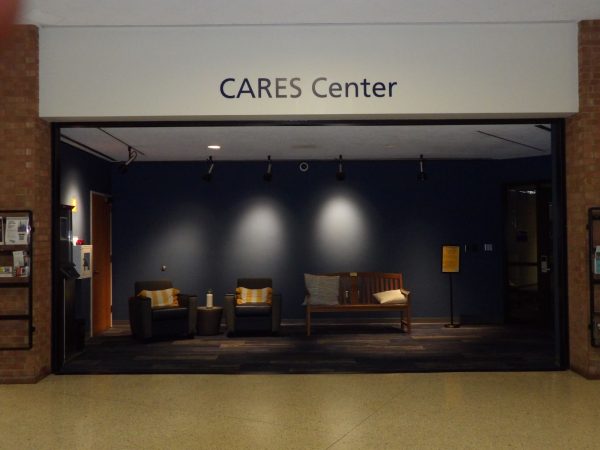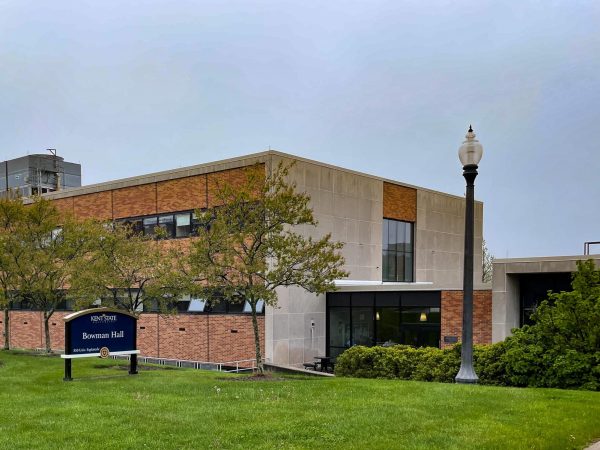Tree Campus USA
March 12, 2013
Oak, birch, maple, elm and cypress are just a few of the wide variety of trees that can be found all across Kent, earning it the nickname “Tree City” in 1949. And for the past 27 years, the name has been officially awarded to the city by the National Arbor Day Foundation.
This year, Kent State received the foundation’s Tree Campus USA award for the fifth consecutive year.
Donald Rastetter, employee at the National Arbor Day Foundation, said most cities awarded the Tree City title also have a Tree Campus USA college or university, but not all. He also said he thinks Ohio is one of the states with the most Tree Cities and Tree Campuses.
A university campus must meet five different standards set by the foundation to be considered for the title.
Heather White, manager of campus environment and operations, said a campus must have a tree advisory board that includes student, faculty, facilities management department and community representatives.
Facts about Kent State’s Trees
Oldest Tree: White Oak near Rockwell Hall
Tallest tree: Oak or Poplar
Rarest Tree: “Purple Robe” Black Locust next to Van Deusen Hall
Best climbing trees: Lower-branching trees near Kent Hall and front campus
Best hiding tree: Giant Beech tree near the Alumni Center.
A campus must also have a tree care plan, as well as a plan on how it spends money on trees, an Arbor Day Observance and a service-learning project.
White said the service-learning project is the hardest standard to meet every year. For this year’s project, geography students in an urban forestry class will locate and inventory all the trees on campus.
“I’m pretty sure we are set for our service learning project for the next few years because they have about 4,500 more trees to survey,” White said.
White said other universities may take for granted that trees are always going to be on campus, but Kent State has a tree care program in place that includes regular pruning and maintenance.
White said most of the university’s trees grow on front campus where no buildings have been constructed.
“We actually build new construction with the trees in mind,” White said. “I’d like to think students and faculty would step up and try to prevent them from [cutting down] the trees.”
White mentioned that there are many different trees throughout campus, including cypress, ash, spruce, beech, oak and pear. Only one type of tree she planted — the caucasian wingnut — failed to grow.
“We focus on tree preservation,” White said. “We work hard to preserve the tree canopy that we have. All the trees that we select are selected because they can grow in this area.”
White said that the one place the university doesn’t plant new trees is where the
May 4 shootings occurred. The university only plants trees in that area to
replace those that have died.
Gregg Floyd, senior vice president of finance and administration, will be presented with the Tree Campus USA award during the university’s Arbor Day observance in April. A new tree will also be planted by the residence hall that had the best participation in Recyclemania.
“We are trying to link some of our green programs together,” White said. “Really, the emphasis of this award is on trees on university property and engaging the students.”
Rastetter said trees benefit city environments by reducing carbon dioxide, providing clean air, bringing more wildlife to the area, protecting buildings and structures from wind and, in some cases, reducing energy costs.
“Not only does planting trees benefit the university, but it also instills pride in the
students, faculty and community that they are doing a good thing,” Rastetter said.
Contact Kirsten Bowers at [email protected].























